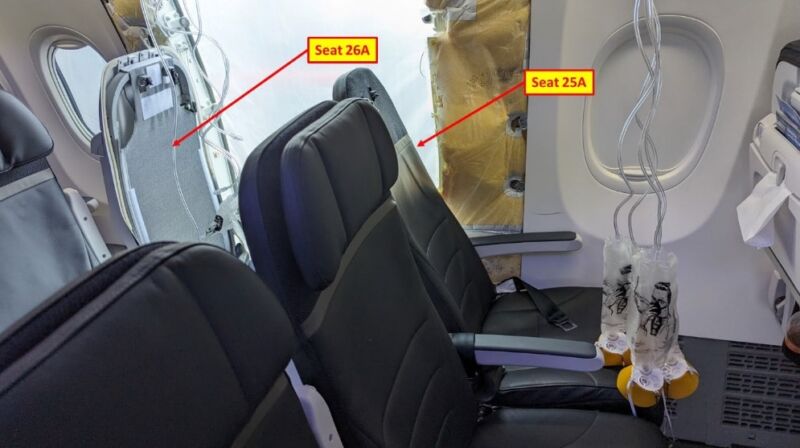

Four bolts were missing from Boeing 737 before door plug blew off, NTSB says
source link: https://arstechnica.com/tech-policy/2024/02/four-bolts-were-missing-from-boeing-737-before-door-plug-blew-off-ntsb-says/
Go to the source link to view the article. You can view the picture content, updated content and better typesetting reading experience. If the link is broken, please click the button below to view the snapshot at that time.
Four important bolts —
Four bolts were missing from Boeing 737 before door plug blew off, NTSB says
Signs indicate that key bolts were missing when 737 Max 9 left Boeing factory.
Jon Brodkin - 2/6/2024, 11:28 PM

Four important bolts were missing from a Boeing 737 Max 9 that lost a passenger door plug during flight, the National Transportation Safety Board concluded in its investigation.
The NTSB's preliminary report issued today is consistent with earlier news reports stating that investigators believed the bolts were missing when the plane left Boeing's factory. The plane used by Alaska Airlines was forced to make an emergency landing on January 5 when the door plug—which is used instead of an emergency exit door—blew off the aircraft in mid-flight.
An absence of markings around the holes where bolts should have been installed was a key piece of evidence cited in the NTSB report:
Overall, the observed damage patterns and absence of contact damage or deformation around holes associated with the vertical movement arrestor bolts and upper guide track bolts in the upper guide fittings, hinge fittings, and recovered aft lower hinge guide fitting indicate that the four bolts that prevent upward movement of the MED [mid exit door] plug were missing before the MED plug moved upward off the stop pads.
The NTSB explained that a door plug is supposed to be "secured from moving vertically by a total of four bolts."
"Once these bolts are installed, they are secured using castle nuts and cotter pins. Outboard motion of the plug is prevented by 12 stop fittings (6 along each forward and aft edge) installed on the fuselage door frame structure," the NTSB said.
AdvertisementObviously, the bolts were never found. "The two vertical movement arrestor bolts, two upper guide track bolts, forward lower hinge guide fitting, and forward lift assist spring were missing and have not been recovered," the report also said.
Door plug is supposed to be simpler
The door plug covers a hole where an emergency exit door would otherwise be. Benefits of door plugs include more space for passengers, reduced weight, and a full-sized passenger window, the NTSB report said. The door plug is also supposed to simplify the configuration because it "does not have the complexity of a door with its associated parts, operations, and maintenance concerns."
A "door plug is only intended to be opened for maintenance and inspection, which requires removing the vertical movement arrestor bolts and upper guide track bolts," the NTSB said today. A recent Wall Street Journal report said that "Boeing and other industry officials increasingly believe the plane maker's employees failed to put back the bolts when they reinstalled a 737 Max 9 plug door after opening or removing it during production."
The preliminary report described the precarious moments after the door plug blew off. The captain reported hearing "a loud bang" when the plane reached an altitude of about 16,000 feet.
"The flight crew said their ears popped, and the captain said his head was pushed into the heads-up display (HUD) and his headset was pushed up, nearly falling off his head," the NTSB report said. "The FO [first officer] said her headset was completely removed due to the rapid outflow of air from the flight deck."
Flight crew reported "that the flight deck door was blown open and that it was very noisy and difficult to communicate." They "immediately contacted air traffic control (ATC), declared an emergency, and requested a lower altitude."
The plane returned to Portland International Airport in Oregon and landed on a runway "without further incident and taxied to the gate." While everyone was safe, seven passengers and one flight attendant suffered minor injuries.
Recommend
About Joyk
Aggregate valuable and interesting links.
Joyk means Joy of geeK